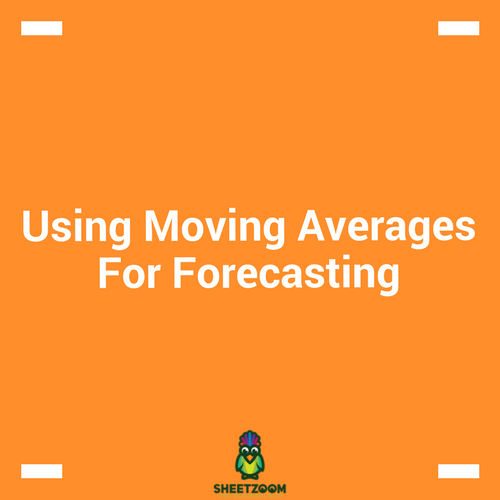Averaging The 5 Lowest Values In Your Data!
Let’s assume you are a math’s teacher interested in finding the average of the math’s score of last five students – he is interested in finding why they are performing poor. How will he proceed?
Finding if a Number if Prime!
Prime Numbers are numbers that are only divisible by their selves. In this small tutorial we will guide you how to find if a number is prime or not.
Using SUMPRODUCT() To Validate Multiple Criteria In Columns
We have studied and used SUMIFS() and SUMPRODUCTS() function with their appropriates use. Just to recall, SUMIFS() work great when our data is in the shape of list or is in column.
Using Moving Averages For Forecasting
Sales people often need to estimate the sales of upcoming months. They do it with a handful of techniques that uses both quantitative analysis as well as qualitative judgment.
Extracting Meaningful Information From Raw Data – An Example Of Using Sales Data To Get Meaningful Insights
If you are running a business and wants to see how much do you sale and what is the breakup and effect of each product on your profits, this post is for you!
How To Sum Every Nth Row In Excel
It is not uncommon that we want to sum data on the basis of certain criteria – on the basis of weeks, months, every tenth day and so on.
10 Quick Time-Saving Excel Shortcuts & Mouse Tricks For Marketers
It is possible to copy a pattern of data in a very simple way. The data can be either numbers, text, dates or formatting.
How To Calculate Weighted Average In Excel
The average value of number of cells or a data range in Excel can easily be calculated using AVERAGE() formula.
Looking Up Number Values
There are five methods you can use to look up number values in excel. These include SUMPRODUCT, SUMIF, AGGREGATE, LOOKUP and a combination of INDEX & MATCH.
SUMPRODUCT Function In Excel
SUMPRODUCT is yet another function that comes to rescue, whether we want to validate a criteria or want to sum against a list of requirements
Understanding And Doing Better With SUMIF Function
SUMIF() functions is among the most commonly used functions in excel. Whenever ever we have to sum against a given criteria we revert to this function, be the criteria be only one or more then one (for more then one criteria’s we use SUMIFS(), just another function of this family).
How To Sum Using Logical Functions - An Example Of Using AND () And OR() In Excel
MS Excel offers seven logical functions, today we will discuss how to use AND () when summing up values.
The Importance Of INDIRECT Function
INDIRECT Function yields a reference to a range. The range being referred can be a named range, a range of cells or can be a cell.
Use Cluster Values to Generate Sequence Numbers
If you are wondering if it is possible to create sequence numbers from clustered values, then you should definitely consider reading ahead to find out more
How to use SUMIFS (Multiple Criteria)
The SUMIF function is used to conditionally sum values based on certain criteria. Another version of that function is SUMIFS
How To Use SUMIF Function (WS)
The SUMIF function is used to conditionally sum values based on a single criteria. The Syntax of this SUMIF function can be explained as follows:




.png)










.png)







